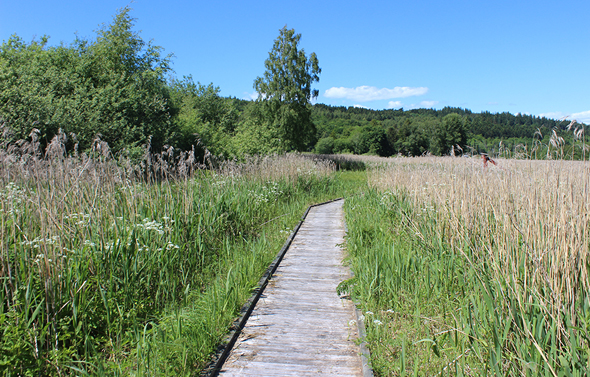The project Alvastra pile dwelling – an archaeological resource will finish with a seminar where the new research portal will be officially launched. An invitation to the seminar and a list of speakers can be found below. Seminar Date:...


The project Alvastra pile dwelling – an archaeological resource will finish with a seminar where the new research portal will be officially launched. An invitation to the seminar and a list of speakers can be found below. Seminar Date:...
We are spending the summer going through everything that has been produced and editing texts so that they can be published on the digital platform which we hope to launch this autumn. Very embarrassingly, when going through all the material stored...
If you wanted to cut out a block of peat containing archaeological remains and place it in a wooden box for transport to a museum for excavation indoors, how would you do it? Would you cut out the block, make a wooden box of the correct size and...
Compiled report In Sweden all archaeological finds belong to the state. The state can decide to transfer the ownership of archaeological finds from the state to another institution if that institution is capable of preserving archaeological...
Our blog has been silent since May. This is because we have been working very hard to complete the assemblage database. We have now succeeded. All the material excavated by Mats P. Malmer has now been registered, partially photographed and placed...
The Royal Swedish Academy of Letters, History and Antiquities has again published a book of interest for all those who want to know more about the Alvastra pile dwelling, this time in English (Malmer 2016). The volume is entitled Archaeology as fact...
Presentation by Hans Browall, 2017-01-16 (edited 2017-01-25) I read with great interest last year’s blog posts on the excavation of the peat block from the Alvastra pile dwelling. The block was removed during the 1930 excavations and the project...
Allow me to introduce a new member of the project group – Sandra Söderlind. Sandra will be working with us for the first six months of 2017, possibly for a longer period of time. I will let Sandra describe her interests and background...
Textile fragment during excavation. Photo: Nathalie Hinders, SHMM We already know that the Dags mosse mire was not only used during the Middle Neolithic. The material traces of these post Stone Age activities are by no means comprehensive but they...
Now one of our textile fragments (see blog post from 11 February 2016) has arrived at the radiocarbon dating laboratory in Brussels. We will inform you of the date as soon as we get it so keep a check on this space.